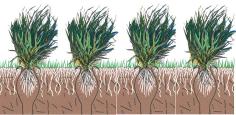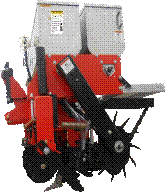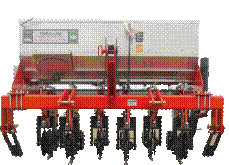

|
Chinese Red Cow Peas In Bahia Grass |

|
Tarver Sales · Folsom, LA 70437 · 800-848-9303 |

|
Summer Bahia grass production will be greatly increased because of: 1.The thorough renovation of the living Bahia sod during planting of the hay barley, oats and rye grass, 2. The fertilizer residue deep under the roots, 3. The moisture stored in the mini seed beds, 4. And the fractured sod. |
|
JUNE 9, 2006 OBSERVATION: A drought condition developed in late April, May and June. We allowed the cattle to continue grazing the Hays Barley and Prine Rye Grass. The cattle grazed the barley much heavier and shorter than the rye grass and consequently the rye grass had an opportunity to grow longer. A second planting of barley was made February 17th into a Bahia grass sod. This planting developed into a crop approximately 18 inches high in spite of drought conditions. The Bahia grass started growing between the rows of barley and controlled grazing was started in May. Under those conditions, the barley continued producing as late in the season as the Prine Rye Grass. The emerging new growth of Bahia was grazed simultaneously with the barley. There was a noticeable improvement in the condition of the cattle.
OVERSEEDING RYE GRASS: Another trial was conducted simultaneously within the “Hays barley-rye grass” trial. Rye grass was over-seeded crossways over the Hays barley and rye grass rows into the sod strips between the rows the same day the Hays barley and rye grass were planted in the rows. It consisted of a strip approximately 40 feet wide through the middle of the field. A Tarzan Chain Link Drag Harrow was pulled crossways over the rows to cover the seed with thatched mulch and some loose soil. The purpose of the “over-seeding trial” was to compare how much faster the crop developed in the mini seed bed versus planting on the sod and how much sooner it would be available for grazing. The first grazing of the over-seeded crop was available by the third grazing of the crop planted in the mini seed beds. CLOVER OVERSEEDING: An ideal way to establish clovers is over-seeding clover into the sod between the mini rows like the rye grass was over-seeded (in the above trial)—resulting in a bonus of increased forage plus free nitrogen. NOTE: Often volunteer clover emerges in old sod fields after the Plant-O-Vator® operation. |
|
A real benefit is realized when a drought condition develops. |

